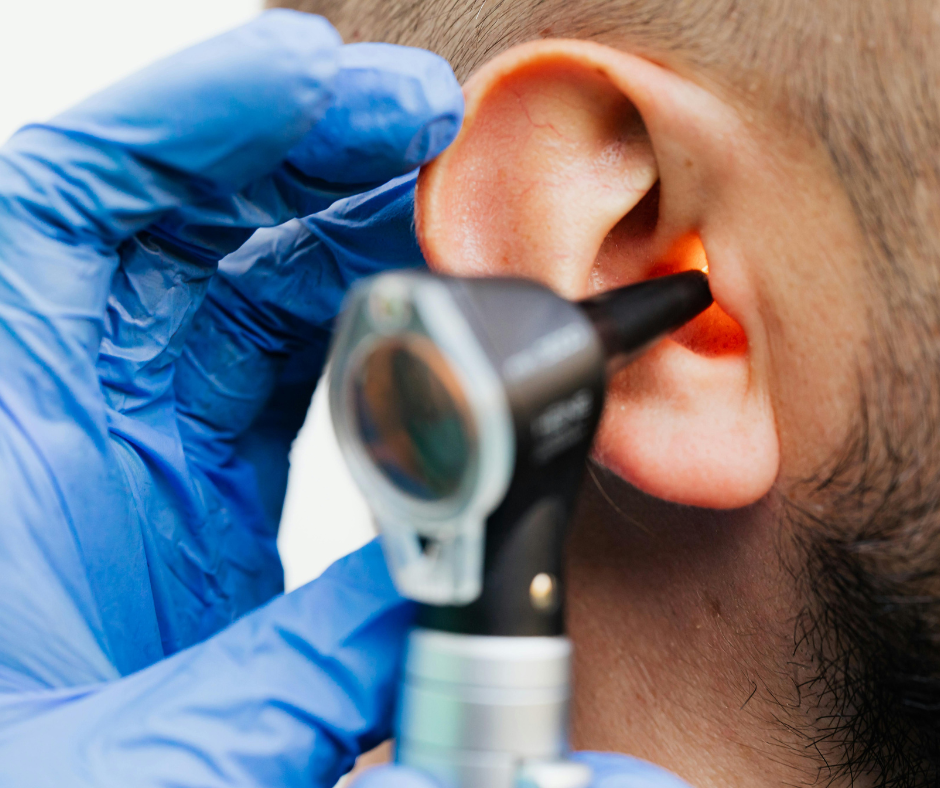Our Blog
How to Decide Between a Walk-In Clinic or the ER for Minor Summer Injuries

Summer activities often lead to unexpected minor injuries, like sprained ankles from a trail hike, cuts from yardwork, or heat-related symptoms during outdoor sports. When these occur, many people are unsure whether to visit a walk-in clinic or head straight to the emergency room.
Why Walk-In Clinics
Walk-in clinics provide immediate medical attention for non-life-threatening issues; no appointment is needed. Staffed by family physicians and nurse practitioners, they’re equipped to treat common summer injuries like cuts, rashes, mild burns, and sprains.
Their on-site resources, such as digital X-rays and lab tests, enable quick diagnosis and treatment. By selecting a walk-in clinic, you avoid lengthy ER waits and high costs while receiving care from qualified providers familiar with common seasonal injuries. Some operate under OHIP, meaning most services are free with a valid health card. They also often operate with extended hours, including weekends.
Use ER for Serious Emergencies
The emergency room is designed for critical and potentially life-threatening situations that demand immediate, comprehensive medical intervention. If you suffer severe trauma, deep wounds with heavy bleeding, or suspected broken bones with deformity, the ER provides immediate care. Head injuries accompanied by confusion or unconsciousness also require urgent care.
Additionally, symptoms such as chest pain and difficulty breathing are emergencies where the ER offers access to specialists, advanced imaging, surgery, and constant monitoring. It operates 24/7, offering you round-the-clock readiness for complex or unstable conditions that require urgent hospital admission or intensive care.
How Do You Decide?
Knowing the difference between the two options and making an informed decision can save time, reduce healthcare costs, and deliver prompt, appropriate care. Here's how to navigate this important summer health decision.
Expect Efficient Diagnostic Testing
One advantage walk-in clinics offer is access to on-site diagnostic tests that help identify the extent of injuries quickly. Unlike ERs, where more complex diagnostics are prioritized for critical cases, walk-in clinics use digital X-rays and rapid lab tests to evaluate fractures, infections, and other conditions relevant to minor injuries.
This efficiency reduces wait times for results and facilitates faster treatment decisions, enabling you to start recovery sooner.
Save Time and Money
Opting for a walk-in clinic offers considerable advantages in terms of efficiency and cost-effectiveness. Compared to the ER, walk-in clinics typically provide shorter wait times, often under an hour, and more affordable fees with lower co-pays or self-pay rates. These clinics maintain extended hours, including evenings and weekends, and offer a broad range of services from diagnostic testing to vaccination.
This combination of accessibility and lower financial burden makes walk-in clinics an excellent choice for non-urgent injuries, allowing you to receive quality care without disrupting your day or draining your wallet.
Evaluate Injury Severity Quickly
Assessing the seriousness of an injury swiftly is key when choosing between the emergency room and a walk-in clinic. First, identify any signs of uncontrolled bleeding, loss of consciousness, severe pain, or breathing difficulties that require immediate ER attention. Consider your ability to move the injured area or bear weight; if mobility remains intact, a walk-in clinic may suffice.
Also, evaluate visible symptoms like swelling, deformity, or open wounds. Finally, check the availability of nearby facilities and their hours to provide you with timely treatment. This rapid assessment helps direct you to the most appropriate level of care efficiently.
Prepare by Knowing Local Clinics
Familiarize yourself with the locations, contact information, and hours of nearby walk-in clinics before an injury occurs. Many clinics offer online scheduling, wait time updates, and patient portals, making access easier when time is critical.
Keeping a first aid kit at home or in your vehicle complements this readiness, enabling you to manage minor issues until professional care is available. Being proactive reduces stress and delivers timely, appropriate treatment when summer injuries happen.
Evaluate COVID-19 Safety Protocols
Walk-in clinics have implemented strict protocols such as pre-visit screenings, mandatory masks, and separate waiting areas to minimize the risk of COVID-19 transmission. These measures protect you and other patients while allowing timely access to care.
Knowing a clinic’s safety practices can reassure you when deciding where to seek treatment during the summer months.
Recognize When to Revisit ER
Sometimes, an injury initially treated at a walk-in clinic may require emergency room care if complications arise. Warning signs include worsening pain, increasing redness or swelling, pus or discharge indicating infection, new dizziness or confusion, breathing difficulties, or fever.
These symptoms signal that your injury may be escalating and demand urgent evaluation. Your walk-in provider should inform you about these red flags upon discharge, so you know when to seek immediate ER attention to prevent serious health risks.
Understand Insurance Coverage Differences
Your choice between visiting a walk-in clinic or the emergency room (ER) can have a significant impact on your medical expenses, especially depending on the specifics of your insurance coverage. Here are some important factors to keep in mind to help you make an informed and cost-effective decision:
- Insurance Co-Pays and Deductibles: Most insurance plans charge you less for visits to urgent care or walk-in clinics than for ER visits. This means you’ll usually pay less out of pocket for minor injuries if you choose the right place.
- Higher ER Costs: ER visits often cost more because of extra facility fees, advanced tests, and specialist care. Even simple treatments can end up expensive there.
- Coverage Verification: Before you need care, look over your insurance plan or call your provider to know what’s covered and what you’ll have to pay. This helps you avoid surprise bills.
- Options for Uninsured Patients: Many walk-in clinics offer clear prices and payment plans if you don’t have insurance, making care easier to afford.
- Care Appropriateness: Choosing the correct level of care based on the severity of your condition not only helps control costs but also makes sure that you receive timely and appropriate treatment.
Plan Follow-Up and Specialist Referrals
While walk-in clinics handle most minor injuries on-site, they also coordinate follow-up care or specialist referrals when needed. If your injury requires physical therapy, orthopedic evaluation, or additional diagnostic imaging, clinics facilitate these connections to maintain the continuity of care.
This coordination minimizes delays and helps you navigate the healthcare system efficiently, avoiding unnecessary ER visits.
Keep
Dr. Mike’s Walk-In Clinics in your healthcare toolkit this summer for quick access to quality care. When minor injuries happen this summer, trust our skilled physicians to provide fast, affordable, and expert care close to home.
Stop by one of our locations for more comprehensive care.



